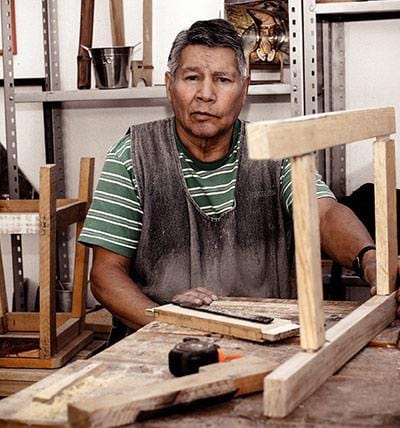Gears are an important part of clocks, and understanding how they work can help you appreciate the timepiece even more. In this article, we are going to explain how clocks use gears. If you are interested in this topic then let’s get started.
How do Clocks Work?
Clocks use gears to tell time. The gears work together to turn the hands of the clock. The gears are made of different sizes. The bigger gears turn slower than the smaller gears. This is how the clock tells time.
Gears in Clocks
Clocks are one of the oldest human inventions, dating back to at least the early Bronze Age. The first clocks were probably SUN clocks, which used the shadows of objects to show the time of day.
Over time, people began to use more sophisticated methods to measure time, such as water clocks, which used the flow of water to keep track of the passing of time. One of the most common types of clocks in use today is the gear clock. Gear clocks use gears to keep track of time. The gears interact with each other to keep the clock running. The most basic gear clock has three gears: minute-hand gear, hour-hand gear, and second-hand gear. So, gears are an important part of many clocks, and they help to keep the time accurate. The gears work together to move the hands of the clock in a smooth and precise way. Each gear has teeth that fit together with the teeth of the other gears, and this meshing of teeth is what helps to keep the gears turning smoothly. Gears are used in clocks because they can help to create a consistent and reliable motion. This is important for keeping time because if the gears were not used then the motion of the hands would be less consistent and the timekeeping would not be as accurate. The use of gears in clocks is an example of how simple machines can be used to create complex and precise mechanisms.

The Role of Gears in Clocks
Gears are an essential part of many clocks, both modern and vintage. By understanding how gears work, you can better appreciate the mechanisms of these timekeeping devices. Gears are toothed wheels that mesh together to transfer rotational motion. Clocks use gears to move the hands around the dial at a consistent rate. The gears are driven by a spring or weight, which unwinds at a steady pace. The escape wheel is the gear that is driven by the power source. It has teeth that catch on the teeth of the verge, or pallets. As the escape wheel turns, it also turns the verge. The verge is a horizontal shaft with weights on either end.
What are The Benefits of Using Clock Gears?
One of the most common ways that clocks use gears is to create a device called an escapement. Escapements are used to allow the clock's hands to move in a steady, even motion. Without an escapement, the clock's hands would move in a jerky motion, making it difficult to tell time accurately. Gears are also used in clocks to create what is called a drive train. The drive train is responsible for transferring power from the clock's weight or spring to the clock's hands. This ensures that the clock's hands will continue to move even when there is no power being applied to them. There are many benefits to using gears in clocks, including the following. They help to distribute the weight of the clock evenly, which makes the clock more accurate. Gears help to reduce friction, which makes the clock run more smoothly. Also, they can be used to change the speed at which the clock runs, which is helpful if you want the clock to run faster or slower. Gears can be used to create a variety of different sounds, which can be used to create an interesting and unique clock. Clock gears can be used to create a variety of different visual effects, which can make a clock more visually appealing.
The Different Types of Gears
Spur Gears
The first type of gear is the most common and it is called the spur gear. Spur gears have teeth that are cut into the outside edge of a cylinder or disk. The teeth mesh with the teeth on another gear, which causes the gears to turn. They are used in most clocks, and they are very efficient at transferring power from one gear to another.
Helical Gears
Helical gears are gears that have teeth that are angled or spiral in shape. This type of gear is often used in pairs, with one gear meshing with the other. When two helical gears are used together, they can create a smooth, quiet operation. This is why helical gears are often used in clocks - to keep the ticking sound as quiet as possible. Helical gears can also be used in other applications where a quiet, smooth operation is desired.

Bevel Gears
Bevel gears are used to transfer motion between two shafts that are at right angles to each other. The teeth on bevel gears are cut at an angle, which allows them to mesh together smoothly. Bevel gears are very efficient at transferring motion and can be used in a wide variety of applications.
Final Thoughts
It is amazing how something so simple can be so fascinating. Clocks have been around for centuries, and they use gears to keep time.
The gears work together to create a mechanical advantage, which helps the clock run smoothly and accurately. The next time you look at a clock, take a moment to appreciate the engineering that went into making it work.
Commonly Asked Questions
How do wood clock gears work?
They work by meshing together to transfer rotational force. The teeth on the gears engage with each other and transfer the force from one gear to the next. This type of gearing is known as spur gearing.
How were gear clocks invented?
The invention of the gear clock is credited to Chinese engineer and mathematician Zhang Heng, who lived during the Eastern Han Dynasty (AD 25–220). He invented the world's first water-powered armillary sphere, a device that served as an astronomical observatory, which also had a mechanism that was the forerunner of the modern gear train.
How do clocks regulate required speed?
Clocks regulate the required speed by sending out regular, frequent pulses of energy that keep everything in sync.
What does special gear mean in the clock industry?
It is a type of gear that is designed for a specific purpose or function. In the clock industry, special gears are used to create clocks with special features or functions.
ABOUT THE AUTHOR
Olivia Poglianich
Content Strategist
Olivia Poglianich is a nomadic brand strategist and copywriter in the wooden crafts and 3D product design space who has worked with brands such as Visa, Disney and Grey Goose. Her writing has taken her all over the world, from a Serbian music festival to a Malaysian art and culture event. Olivia is a graduate of Cornell University and is often writing or reading about travel, hospitality, the start-up ecosystem or career coaching. Her latest interests are at the intersection of web3 and communal living, both on and offline.






